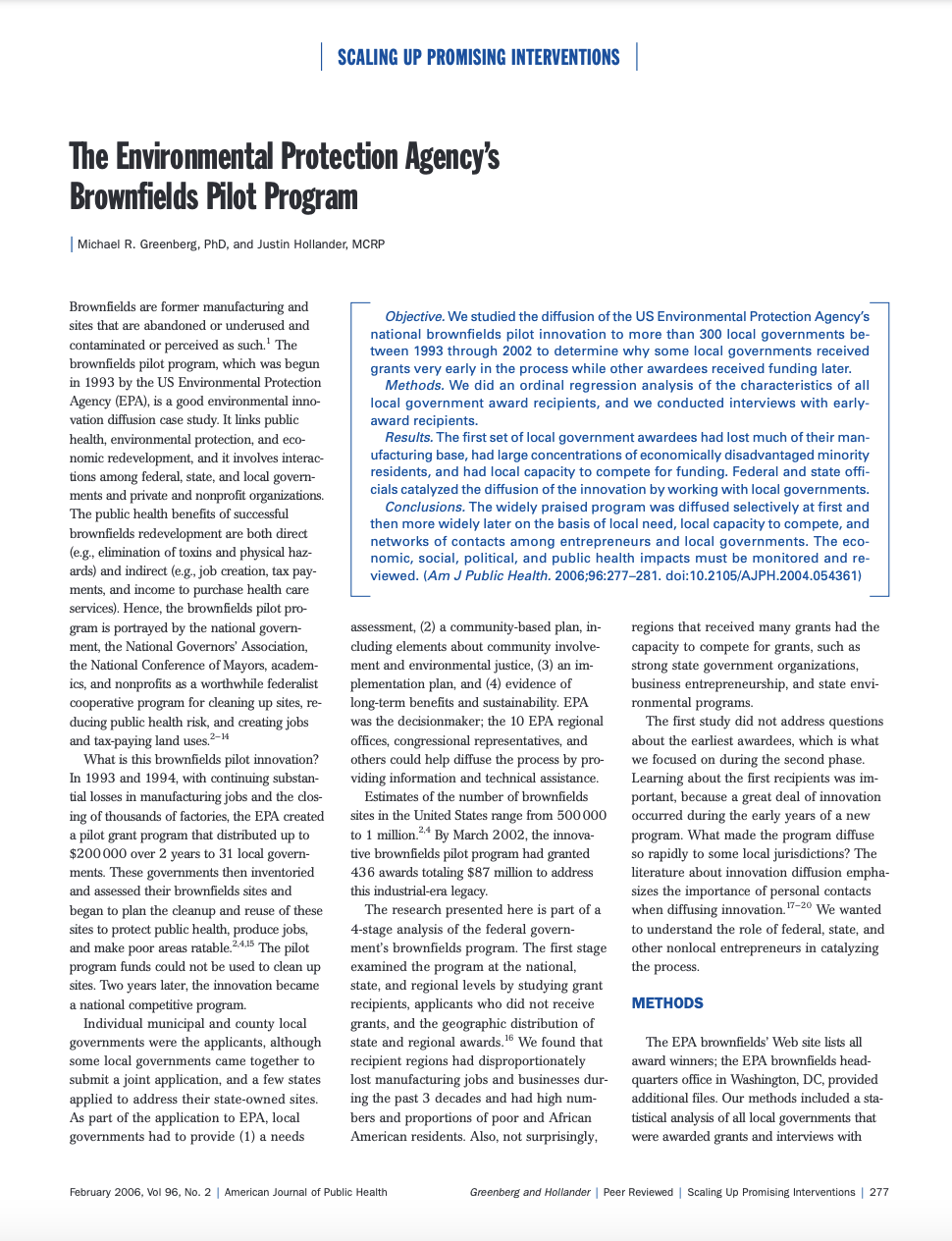Objective. We studied the diffusion of the US Environmental Protection Agency’s national brownfields pilot innovation to more than 300 local governments between 1993 through 2002 to determine why some local governments received grants very early in the process while other awardees received funding later.
Methods. We did an ordinal regression analysis of the characteristics of all local government award recipients, and we conducted interviews with early-award recipients.
Results. The first set of local government awardees had lost much of their manufacturing base, had large concentrations of economically disadvantaged minority residents, and had local capacity to compete for funding. Federal and state officials catalyzed the diffusion of the innovation by working with local governments.
Conclusions. The widely praised program was diffused selectively at first and then more widely later on the basis of local need, local capacity to compete, and networks of contacts among entrepreneurs and local governments. The economic, social, political, and public health impacts must be monitored and reviewed.
